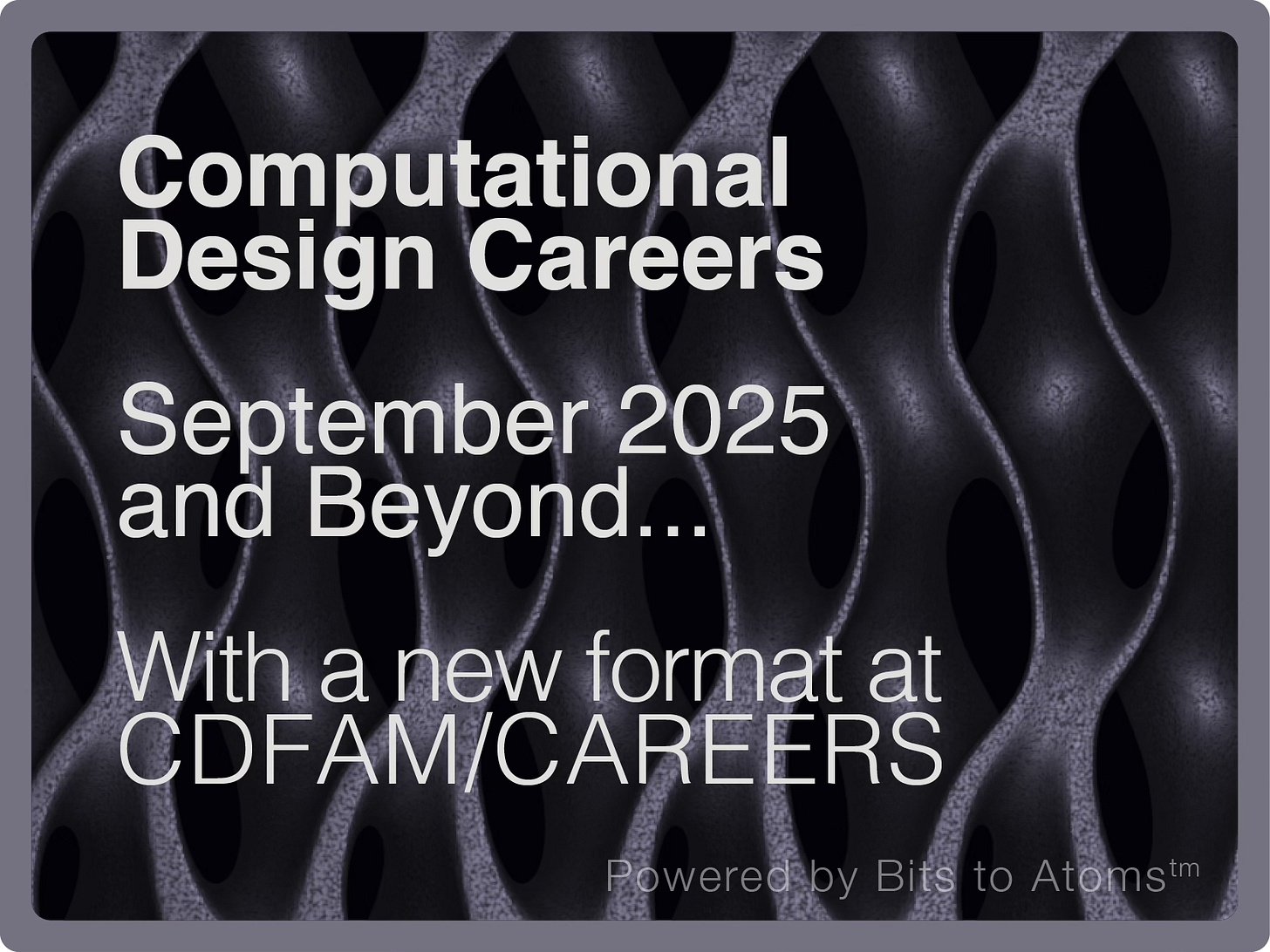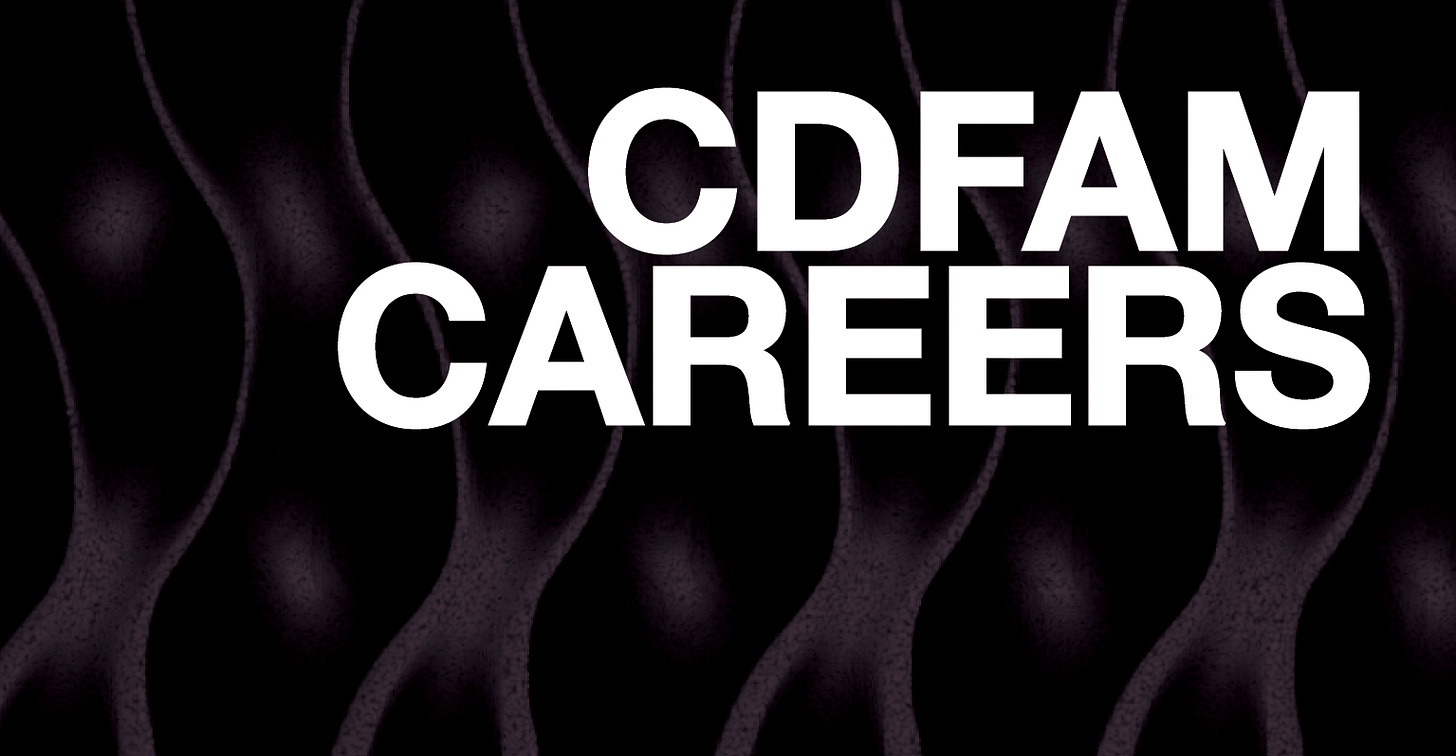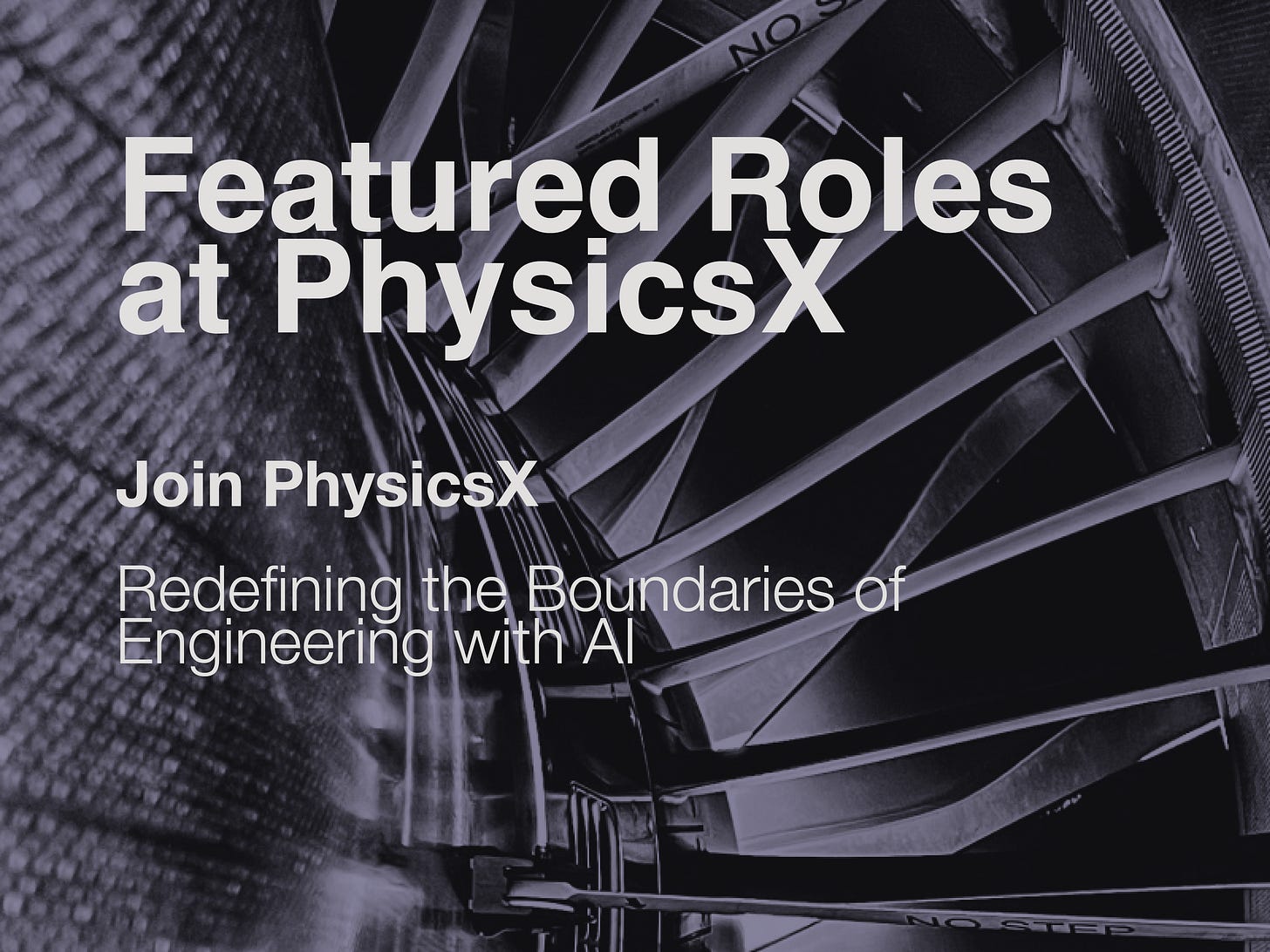Computational Design Careers for September 2025, and beyond...
A better way to find open roles and talent in computational design, engineering and architecture, from research to the application of AI/ML in the physical world.
Computational Design Careers – Now with a permanent, and upgraded home!
Bits to Atoms has always aimed to connect leading experts across computational design, engineering, and architecture.
Recently, we’ve had increasing requests for more ways to promote open roles in a competitive job market, where outstanding talent is increasingly hard to find in these highly specialized, and quickly evolving areas.
To respond, we’ve moved our monthly careers listings we have been posting since 2023, to a permanent home on the CDFAM – Computational Design Symposium website with more features and flexibility at https://cdfam.com/careers/
The Types of Roles You’ll Find
Computational design today spans multiple domains, and the roles reflect that breadth:
Academic & Research – positions in universities and research institutes focused on new methods, materials, and design paradigms.
Software Development – roles building the algorithms, platforms, and tools that enable computational and AI workflows.
Applied Engineering – opportunities in aerospace, automotive, footwear, medical devices, and other industries where computational methods are central to product development.
Architecture & Built Environment – positions at firms and labs applying computational approaches, ML and AI to buildings, infrastructure, and urban systems.
As demand increases for expertise in AI/ML, optimization, simulation, and generative workflows, these roles are not confined to a single discipline.
The careers board provides a central point to find open roles and expert talent.
Benefits for Job Seekers
For job seekers, the CDFAM Careers platform provides a focused space to explore opportunities that are often difficult to find through general job boards.
Instead of filtering through unrelated postings, candidates can quickly identify roles aligned with computational design, simulation, AI/ML, and advanced engineering.
The listings span research, software development, applied industry, and architecture, giving a clear view of the breadth of positions available.
With both free and promoted roles included, the platform increases visibility into specialized openings at organizations actively seeking expertise in this field, making it easier for talent to connect with employers who understand the value of computational methods, AI and machine learning in the physical world.
Benefits of Posting a Role
Posting a role on the CDFAM Careers Board ensures it is seen by professionals already working at the intersection of computation and design.
The CDFAM community includes engineers, architects, software developers, and academics from leading organizations and research institutions.
CDFAM Attendees and subscribers represent a global network spanning industries such as aerospace, automotive, footwear, medical devices, software development and the built environment.
Benefits include:
Targeted audience – engineers, designers, academics, and developers with computational and/or AI/ML expertise.
Global reach – the CDFAM network extends across North America, Europe, and Asia,
Relevant context – jobs are listed alongside research, case studies, and events in computational design, placing opportunities where talent is already engaged.
Free and Promoted Options
Free Listings – open to all organizations and vetted for relevance, ensuring every role is suitable and visible to the CDFAM community.
Promoted Listings – for positions needing more visibility, promoted roles are featured prominently and included in CDFAM newsletters, reaching a wider professional audience. (check out the PhysicsX Feature as an example)
The careers page is updated regularly with new opportunities.
Check the listings, share them with colleagues, and if your organization has a position to fill, submit it here and we will review and post as is.
Get in touch if you are interested in exploring further promotion to the community.
Join leading experts in computational design across all scales, from micro to mega for two days of knowledge sharing and networking in NYC, October 29-30.
From AI and machine learning for material development and simulation, to multi-objective computational design of architectural systems, the two day program features researchers, practitioners and software developers leading the advancement of data-driven design, agnostic of application.




